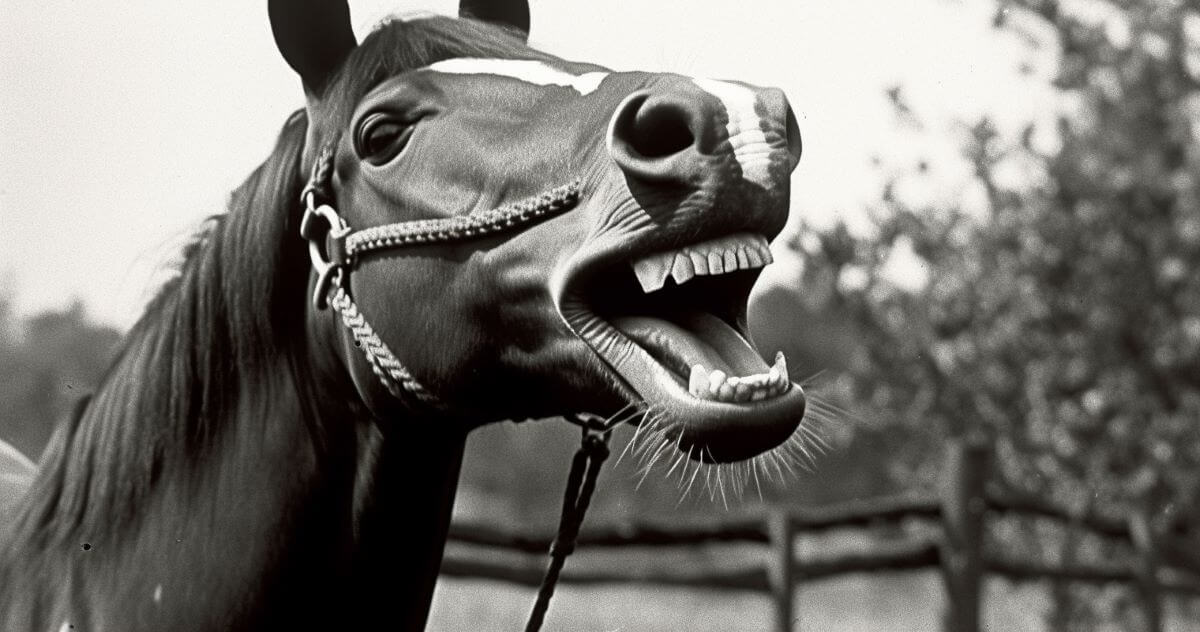long in the tooth
Meaning of the phrase:
-old or getting old
· My car is getting long in the tooth. The last time I turned on the AC, it blew out a cloud of dust that made me feel like I was in the Wild West.
Origin of the phrase:
Do you remember Mr. Ed, America’s beloved talking horse from days gone by? His flapping lips and witty one-liners were unforgettable. But let’s talk about his teeth for a minute. While they were impressive, they were also a bit…well, long in the tooth. So, what does that phrase mean? Is it about the horse’s age or its dental work? We did some digging, and it turns out it’s a bit of both.
“Long in the tooth” is a colorful way of saying you’re not exactly a spring chicken anymore. It suggests that you’ve been around the block a few times and maybe even over the hill. In other words, it means you’re getting old.
Back in the day, before horses could talk and tell us their age, people had to rely on other methods to determine how old a horse was. And the most reliable method was to look at their teeth. As horses grow older, their teeth keep growing too, but they also get worn down from use. Plus, their gums shrink, which changes the look and shape of their teeth, making them seem longer. By checking out a horse’s teeth, you could get a good guess at its age. And the longer the tooth, the older the horse probably was.
This skill was crucial for those who depended on horses for transportation, farming, and other tasks. After all, if you were going to hire a horse to pull your carriage or plow your fields, you needed a young, strong, and fit horse. A horse that was long in the tooth just wouldn’t do.
And that’s how the phrase “long in the tooth” came to be. It began as a literal description of an aging horse, but over time, it evolved into a figurative expression used to describe people or things that were simply aging and getting on in years. In fact, the earliest known example of the phrase being used figuratively is in William Makepeace Thackeray’s novel, The History of Henry Esmond, Esq., printed in 1852:
His cousin was now of more than middle age, and had nobody’s word but her own for the beauty which she said she once possessed. She was lean, and yellow, and long in the tooth; all the red and white in all the toy-shops in London could not make a beauty of her.
Here’s a piece of advice: it may be best to avoid using the phrase ‘long in the tooth’ when referring to person’s age. While it may seem harmless, it’s always better to err on the side of caution. After all, it’s far better to be long in the tooth than to be absent in the tooth, if you catch my drift.
In conclusion, the phrase “long in the tooth” has come a long way from its humble origins in the world of horses. Now it’s a metaphor that’s used to describe anyone or anything that’s getting up there in years. But let’s not forget the importance of age and experience. Just like a well-aged bottle of wine or a seasoned professional, age can bring wisdom, skill, and a unique perspective that’s invaluable. And who knows, that gift horse you’re eyeing just may turn out to be a Mr. Ed, with all his wit and wisdom, long teeth and all. So let’s avoid looking that gift horse in the mouth and appreciate all the gifts that come our way, no matter their age or appearance. After all, as Mr. Ed himself once said, “A horse is a horse, of course, of course, and no one can talk to a horse, of course. That is, of course, unless the horse is the famous Mr. Ed.”
